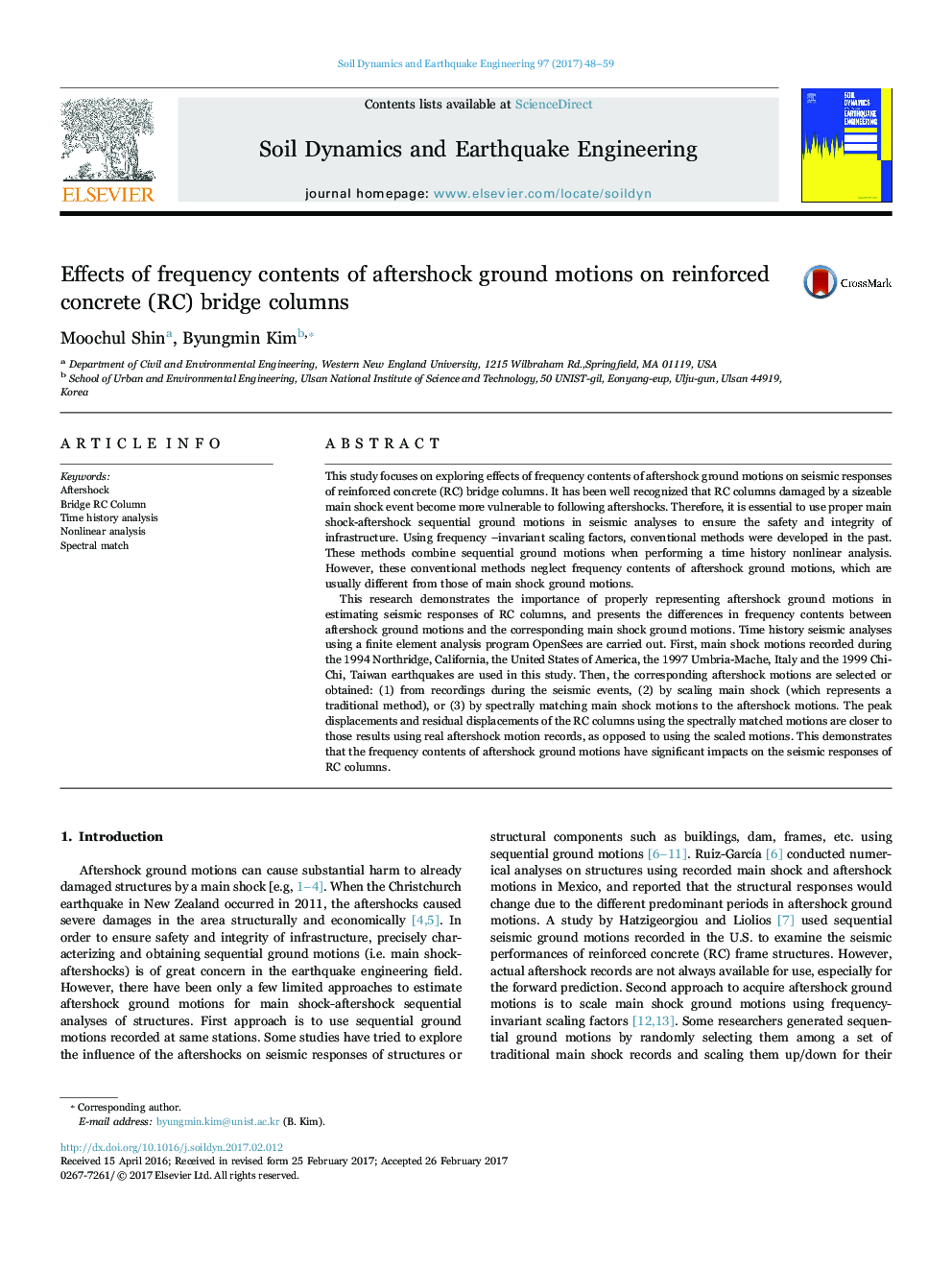| Article ID | Journal | Published Year | Pages | File Type |
|---|---|---|---|---|
| 4927110 | Soil Dynamics and Earthquake Engineering | 2017 | 12 Pages |
Abstract
This research demonstrates the importance of properly representing aftershock ground motions in estimating seismic responses of RC columns, and presents the differences in frequency contents between aftershock ground motions and the corresponding main shock ground motions. Time history seismic analyses using a finite element analysis program OpenSees are carried out. First, main shock motions recorded during the 1994 Northridge, California, the United States of America, the 1997 Umbria-Mache, Italy and the 1999 Chi-Chi, Taiwan earthquakes are used in this study. Then, the corresponding aftershock motions are selected or obtained: (1) from recordings during the seismic events, (2) by scaling main shock (which represents a traditional method), or (3) by spectrally matching main shock motions to the aftershock motions. The peak displacements and residual displacements of the RC columns using the spectrally matched motions are closer to those results using real aftershock motion records, as opposed to using the scaled motions. This demonstrates that the frequency contents of aftershock ground motions have significant impacts on the seismic responses of RC columns.
Related Topics
Physical Sciences and Engineering
Earth and Planetary Sciences
Geotechnical Engineering and Engineering Geology
Authors
Moochul Shin, Byungmin Kim,
